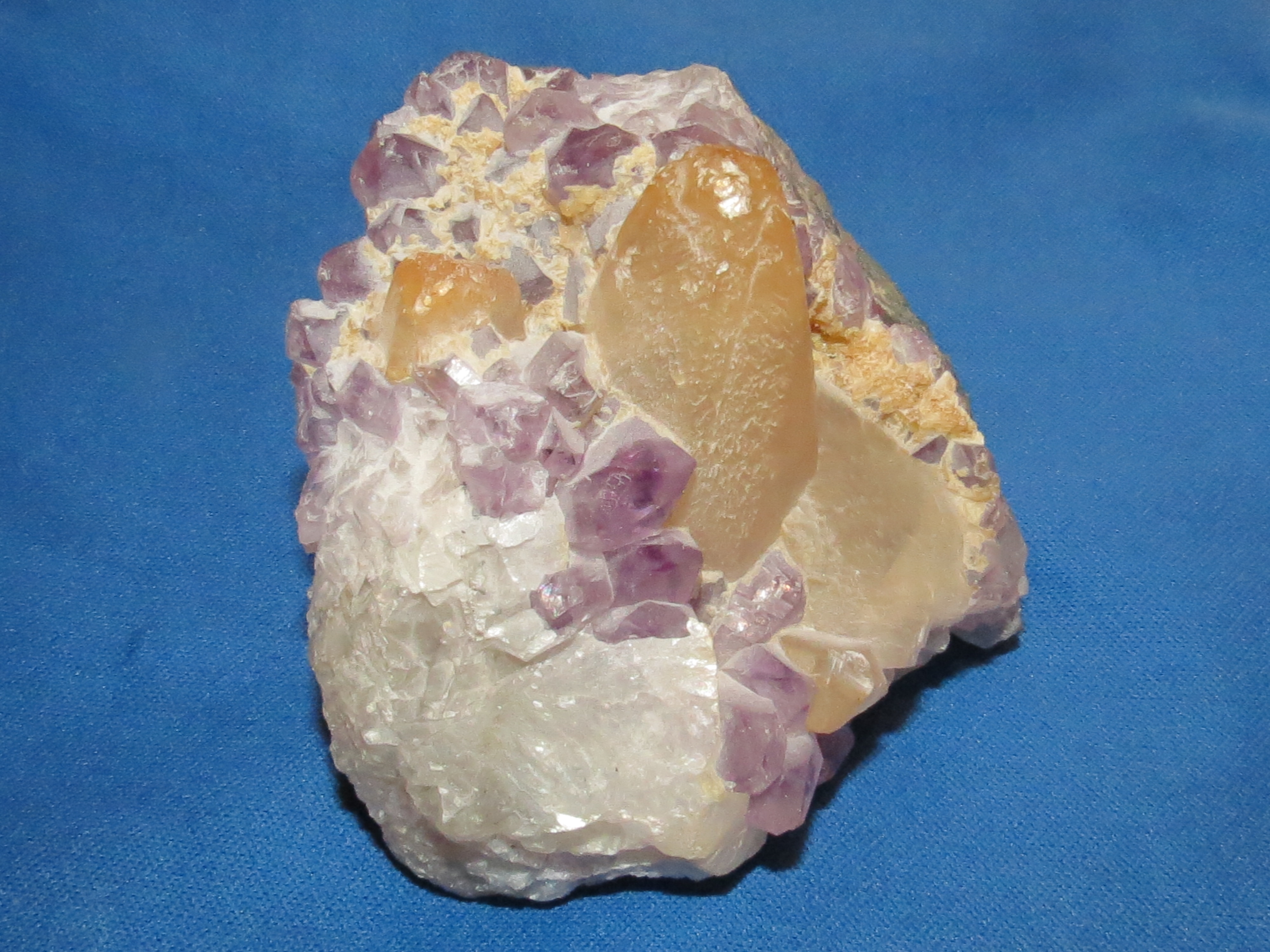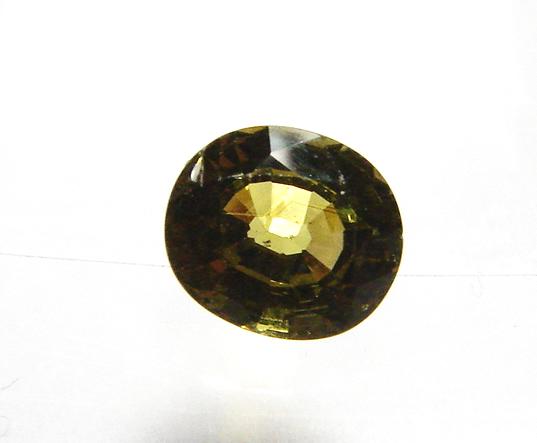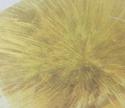Garnets can vary from pink, through red, to orange, yellow, green and black. Recent finds have now added blue to the myriad of colours. So for someone with a birthday in January the choice of colour and colour combinations is vast.
I deliberately headed this blog with a green Mali Garnet to prove the point that the birthstone for January does not have to be red.
But what is Garnet?
What is its scientific nature?
What is its otherworld properties?
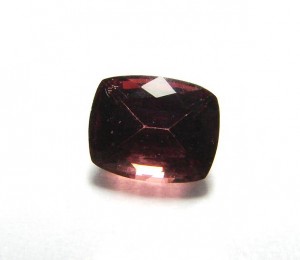
Rhodolite Garnet
THE SCIENCE
Garnets are a very complex group of gemstones.
They are an Isomorphous series, ie they have the same crystal structure, cubic, but with varying chemical mix.
This continuous blend can, for example, create a mid way garnet type. For example the popular Rhodolite garnet above is a Pyrope-Almandine mix.
Garnets can appear as inclusions inside other gemstones, for example as in the image of a diamond below.
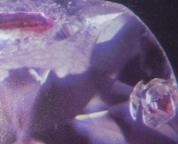
Most of the more common Garnets fall into two groups: Pyralspites and Ugrandites. Pyralspites are the aluminum Garnets and Ugrandites are the calcium Garnets.
Pyralspite Garnet Group: The Pyralspites include Pyrope, Almandine and Spessartine. The name Pyralspite comes from Pyrope, Almandine, Spessartite. This includes the vast majority of gemstone garnets. There is a complete solid solution series between Pyrope, Almandine and Spessartine. These Garnets are often mixed. Malaia is a Pyrope-Spessartine mix and Rhodolite is a Pyrope-Almandine mixture.
Ugrandite Garnet Group: The Garnets with the widest color range fall into the Ugrandite Garnet Group. are the calcium Garnets.The Ugrandites include Uvarovite, Grossular and Andradite. The name Ungrandite comes from Uvarovite, Grossular and Andradite. There is a complete solid solution series between Uvarovite, Grossular and Andradite. As with Pyralspites these Garnets are often mixed. Grandite (or Mali Garnet) is a mixture of Grossular and Andradite.
Garnet Physical Properties: General garnet composition: A3B2(SiO4)3, where Ca, Mg, Fe2+, or Mn2+ occupy the A site, and the B site contains Al, Fe3+ or Cr3+. Hydrous garnets may contain up to 8.5% H2O.
Chemical Composition:
Pyralspite Garnet Group
Almandine: Fe3Al2(SiO4)3
Pyrope: Mg3Al2(SiO4)3
Spessartine: Mn3Al2(SiO4)3
Ugrandite Garnet Group
Andradite: Ca3Fe2(SiO4)3
Grossular: Ca3Al2(SiO4)3
Uvarovite: Ca3Cr2(SiO4)3
There are far less common types, which are rarely if ever found in jewellery. There are even garnets from space, such as Majorite which was discovered in a meteorite.
With such a wide diversity in chemical composition other properties such as hardness are varied. The benchmark for hardness is MOHS scale. With Talc at 1 as the softest and Diamond at 10 as the hardest. The scale is (1) Talc, (2) Gypsum, (3) Calcite, (4) Fluorspar, (5) Apatite, (6) Orthoclase feldspar, (7) Quartz, (8) Topaz, (9) Corundum, (10) Diamond.
The most common Garnets have a hardness rating as follows: Almandine (7.5), Andradite (6.5), Grossular (7.0 – 7.5), Pyrope (7.25), Spessartite (7.25), Uvaroite (7.5).
If you are interested in the science of gemmology I can no more than suggest you attend some of the wonderful courses run by the Gemmological Association of Great Britain www.gem-a.com

THE OTHERWORLD PROPERTIES
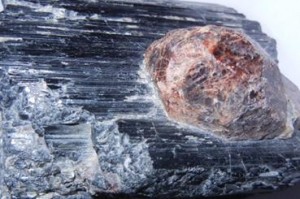
Garnet on black tourmaline from India
Garnets are said to protect the wearer from poisoning and illness of the blood. Perhaps associated with the blood colour of the common garnet – pyrope.
Also associated with red garnets, in ancient times it was believed to remove anger.
George Frederick Kunz noted this in his wonderful book ‘The Curious Lore of Precious Stones’ (1913) that ‘the symbolism of color played a very important part in recommending the use of particular stones for special diseases’.
It is further said that it will ensure the wearer is faithful and will speak the truth.
VALUE
So how much is a garnet worth?
It all depends on type and quality.
Some garnets by their nature are full of inclusions. A clear pyrope garnet is less valuable than a demantoid garnet with what is known as ‘horsehair’ inclusions. Carat for carat it could be as much as twenty times the value!
This is why it is crucial that the jewellery valuer that you appoint is a qualified and experienced gemmologist. Firstly to determine the garnet type you have in your collection, its quality and its current value.
As a Fellow of the Gemmological Association of Great Britain and a Fellow of the National Association of Goldsmiths Institute of Registered Valuers it is my ethos to ensure that I continue to offer high standards in appraisals.
Steven Jordan FGA DGA FNAG FIRV
Managing Director
Share and Enjoy
